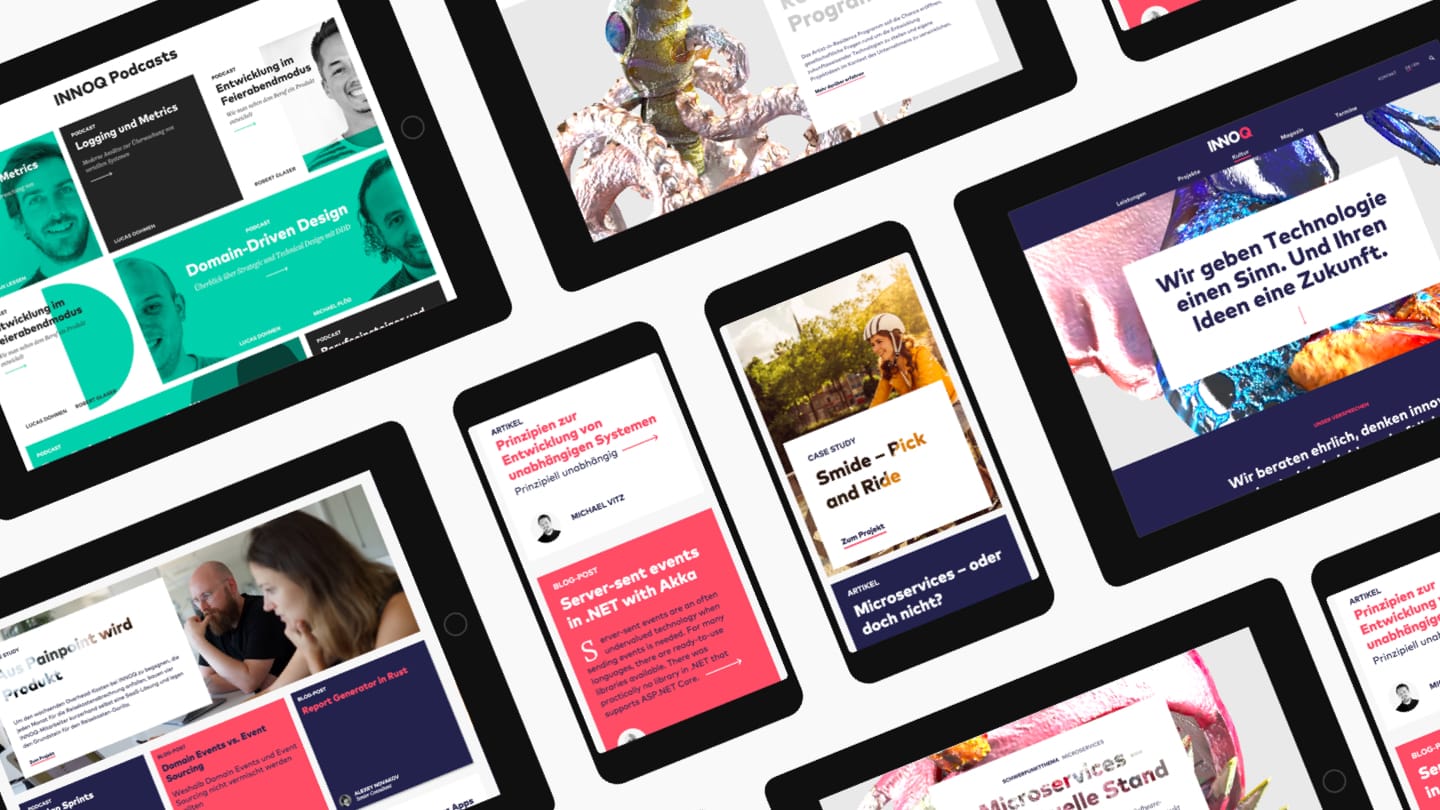It often goes no farther than the naming of interchangeable and and empty brand values. After all, every company that wants to survive on the market is supposed to be ‘innovative’, ‘reliable’ or ‘customer-oriented’.
Abstractly developed, top-down values do not work for employees or for potential customers. They do not stimulate motivation; they do not move the company forward and they do not make it distinguishable to the outside from other companies. And how are customers supposed to get their bearings and choose the right one for themselves from a large number of seemingly similar companies?
Anything but ordinary
Anyone who wants to assert themselves in competitive markets that are easily accessible at the click of a mouse, where offers often appear interchangeable at first glance, must take a different path. It is essential to work out the unmistakable core of the brand and make it visible. Exceptional brands are easier to grasp, they are more tangible and they attract identification, thereby making a decisive contribution to business success.
Every company already possesses this core, but is often unaware of it. Actually, we just need to pose three questions as part of comprehensive brand management: Why? How? What?
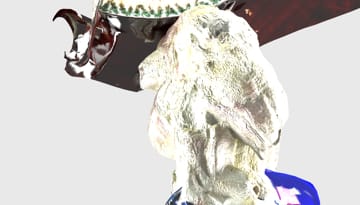
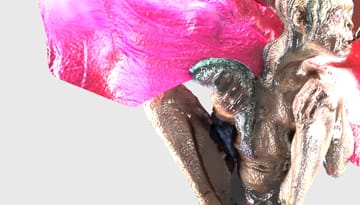
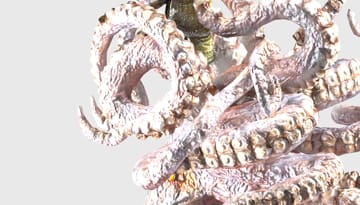
They form the basis for the strategy of the business model, brand positioning and definition of what the company offers.
The first question is why
Why do you do what you do? What drives you internally? What do you change and impact in the world with it? And why is it important for your customers?
A dilemma provides impetus: INNOQ’s identity crisis
The initial situation at INNOQ was both promising and difficult at the same time: The company had developed a promising culture based on self-organization and self-responsibility, an open culture of debate, flat hierarchies and regular training events, accompanied by a high level of employee satisfaction. On the other hand, INNOQ’s extensive and complex offer of products and services is very convincing. The technophile and highly qualified software developers continuously explore new things and are generally ahead of their time due to their enthusiasm for experimentation. But the company was stuck: Despite its strong culture, the company had not yet succeeded in making its identity visible. On the contrary, for a long time, the company’s management were not the only ones who struggled with visual metaphors that absolutely did not do justice to INNOQ.
Step 1:
Becoming aware of your own identity
INNOQ turned to us in their quest for new ideas for a strong brand image. The aim of the strategic brand management process was to be an extraordinary brand identity that inspires people to talk about INNOQ, makes the company’s vision experienceable, and invites people to continue exchanging ideas.
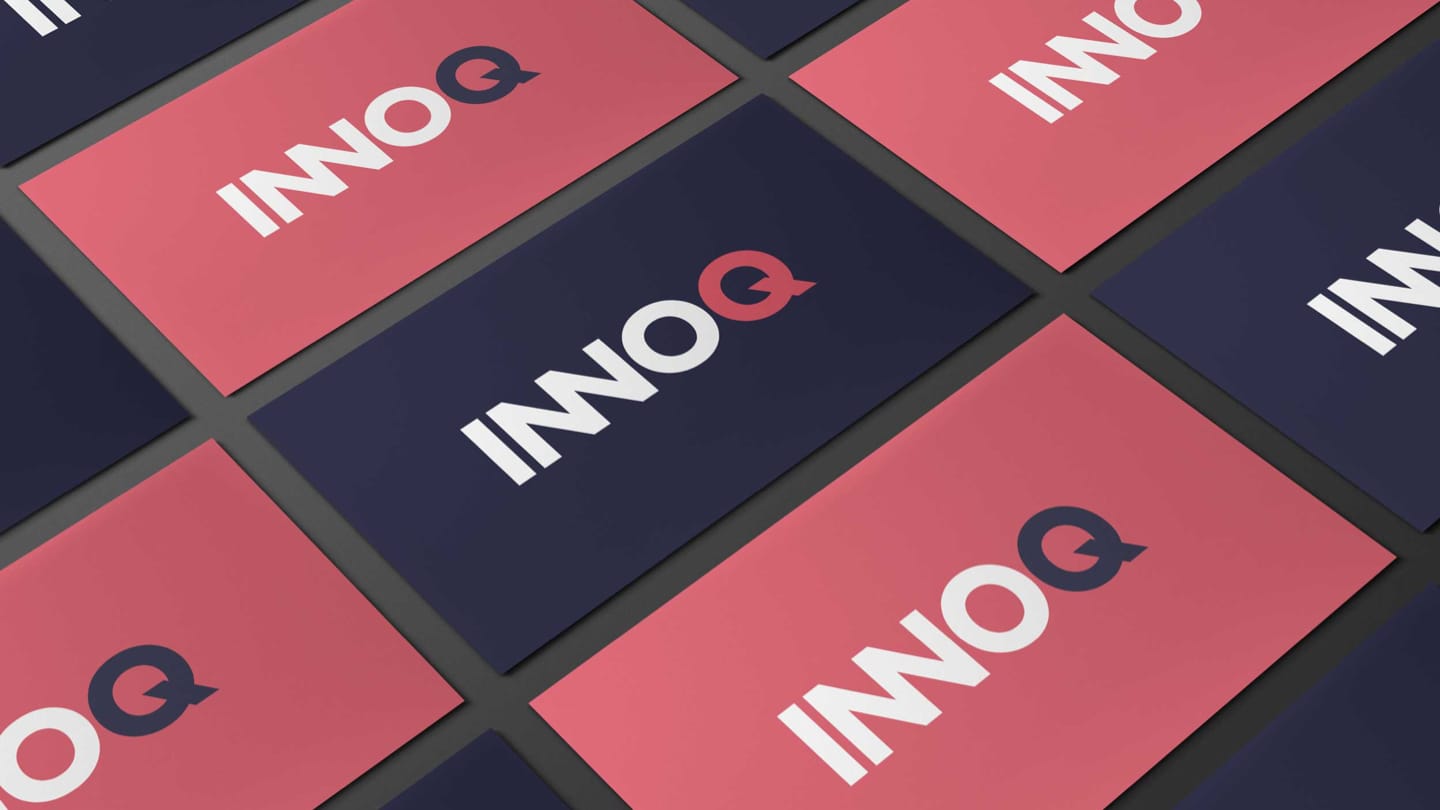
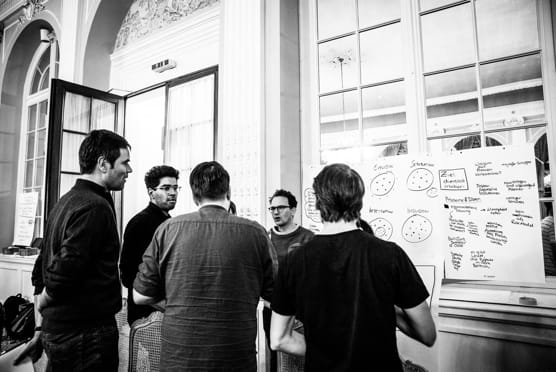
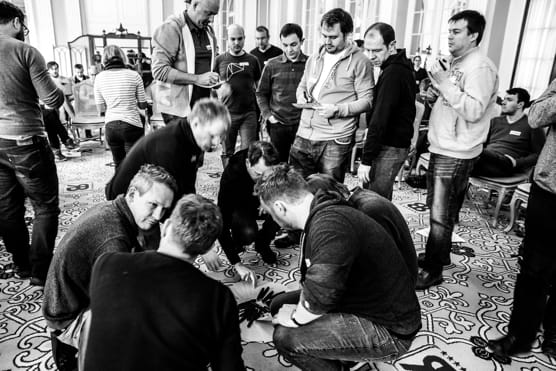
When we asked the company’s representatives the question why during a multi-step process, it immediately became apparent that INNOQ knew its inner drive perfectly well:
INNOQ’s desire was to develop software that supports people and makes the world less complex for its users. INNOQ wants to reconceive and have a positive impact on the interface between human beings and technology.
Step 2
Identifying the core values
How do you proceed? What makes you better than the others? What is your distinguishing feature and unique selling proposition? Describe the path you take.
“We want to do sensible and meaningful things that make a difference. If our technical solutions provide real benefits and make life easier for our users, then we have done a good job. We want to be proud of our contribution to success and identify with the results.”
In this statement we discovered the question of sense and meaning as the most important core value shared by everyone. INNOQ scrutinizes its own activities and only develops solutions that make sense to its customers, unlike some competitors who sell technology to their customers solely for the sake of technology.
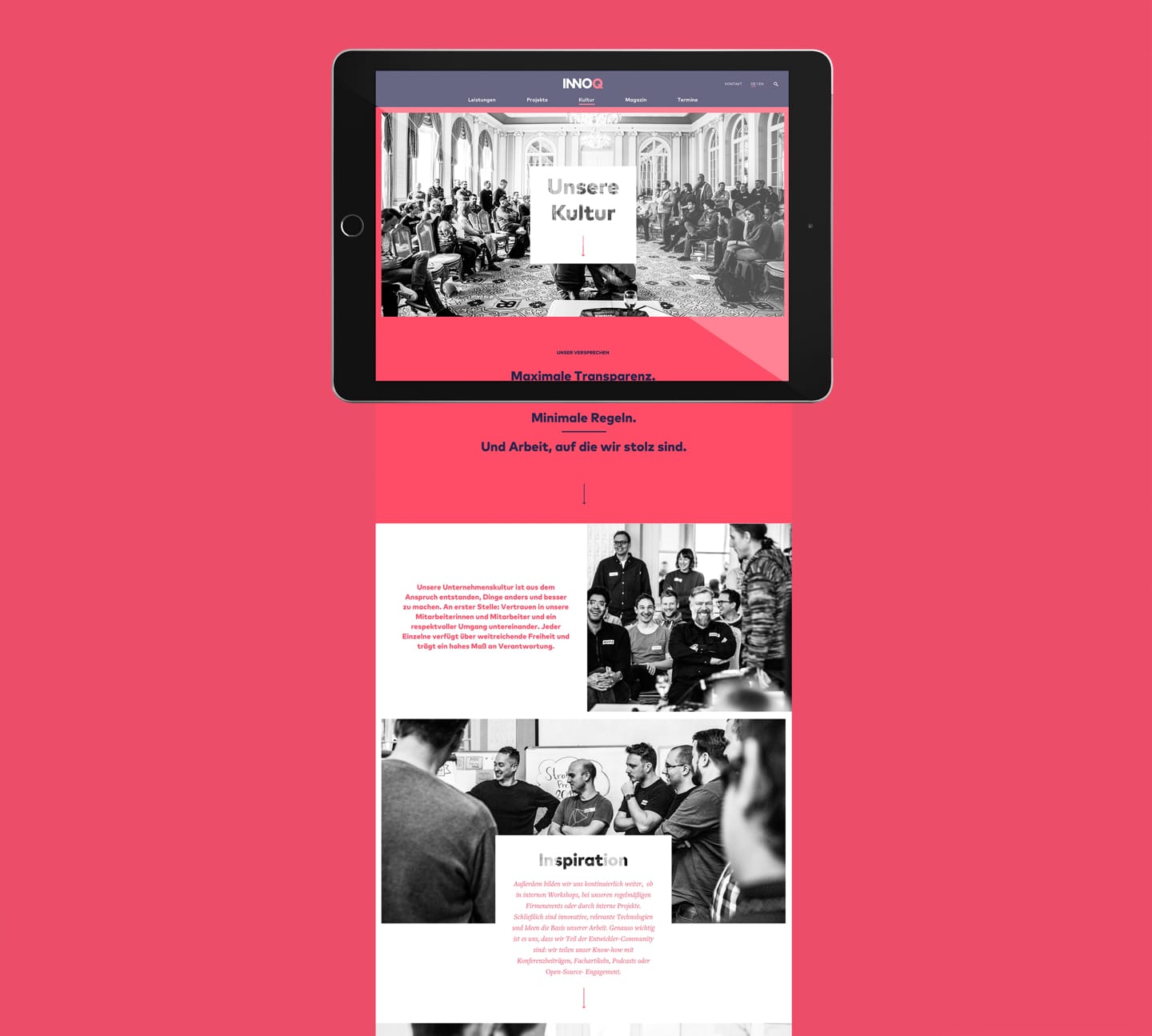
Step 3
Clearly defining the portfolio of products and services
What exactly do you do? What can someone buy from you? How can you describe and structure the things that you offer? What elements are there? What is the result?
Because a strong brand needs a distinct value proposition, we also helped INNOQ break down its very extensive portfolio of services into needs-based service segments on the basis of customer profiles.
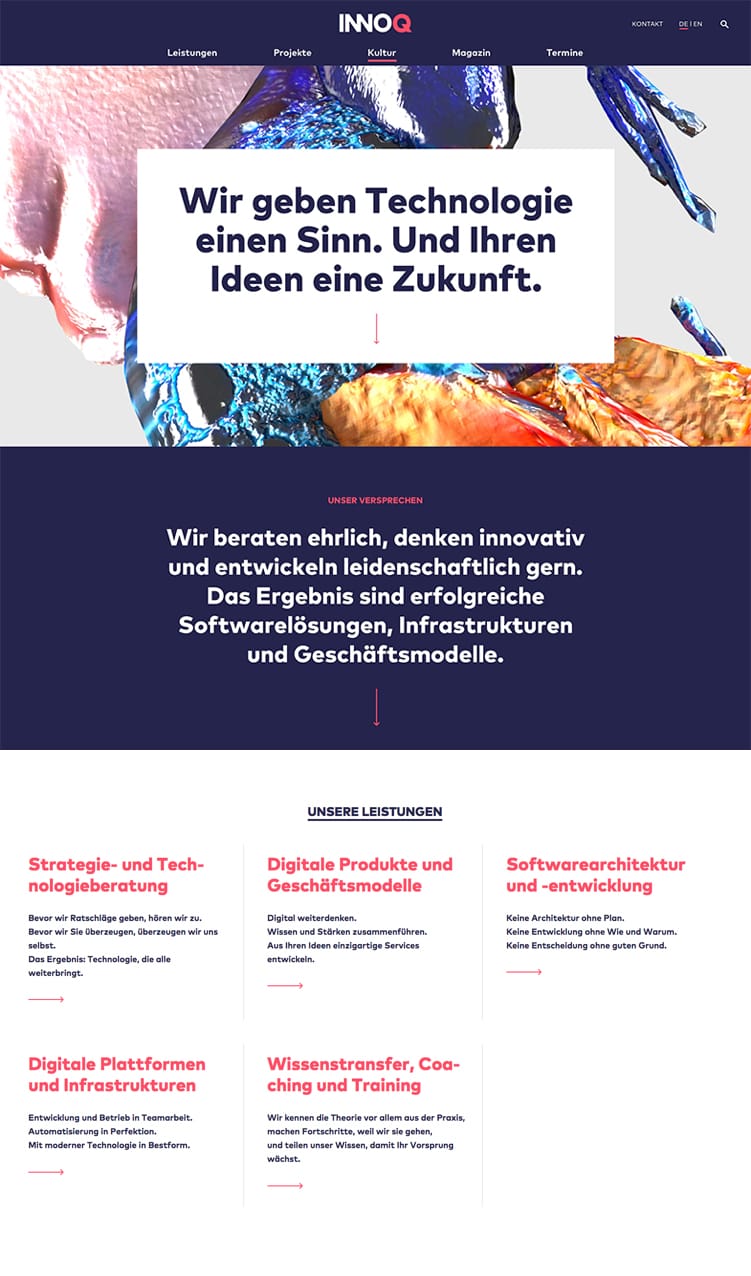
Freestyle:
The creative concept
It soon became clear that this company needed an extraordinary staging. But what visual theme would be able to translate the brand core without seeming flat and contrived?
Developing the Brandbook
The visible brand identity should be like the company itself: diverse, inspiring and bold. While looking for metaphors for these properties, we came across the idea of media art. Art asks society questions about sense and meaning. Art reveals new paths. Art changes perception.
And even better, media art uses technology to create a discussion about the ambivalent relationship between human beings and technology. And that is exactly what we needed, because technology itself cannot be adequately visualized, but it can lead to interesting visualizations. Close collaboration with different artists each year, who are given the opportunity to create works of art with INNOQ and in turn receive technical and financial support, seemed to be a productive approach. A collaboration of art and technology with the aim of mutual learning and inspiration. This makes it possible for INNOQ to act as a sponsor and at the same time as a stage, and provide the artists with publicity in return.
At the Center for Art and Media in Karlsruhe (ZKM), one of the world’s most renowned media art institutions, the exhibition “Open Codes. Living in Digital Worlds” was being readied for display during the brand development period. The curators were enthusiastic about our idea, and our conversations developed into a collaboration which selected Matthew Plummer-Fernandez as the artist for the first year. The British-Colombian artist, whose works can already be admired in the Centre Pompidou in Paris, created a work of art that invites interaction online as a website, and also takes on a physical form as a five-metre-high digital sculpture called ‘Vertigo in the Face of the Infinite’. This was an exciting undertaking for the project team, since the artist and the software experts had to meet a variety of artistic and technical challenges.
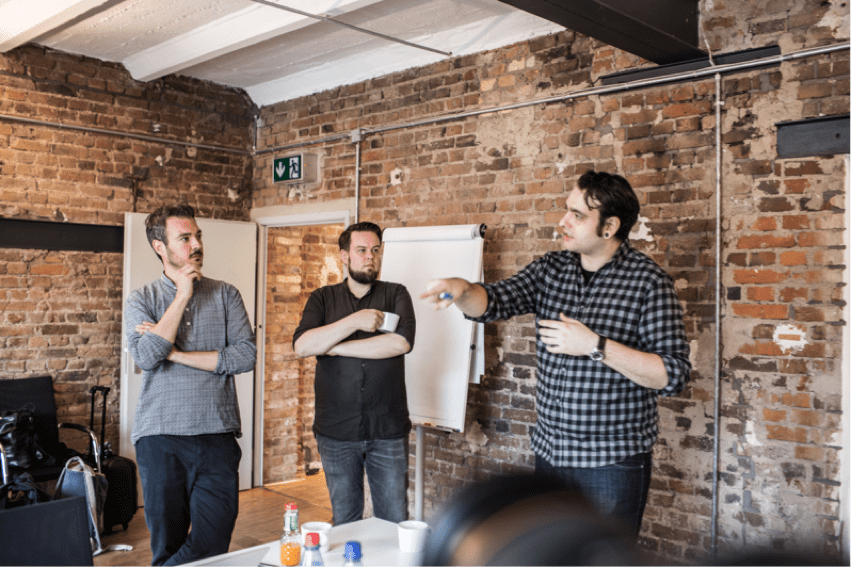

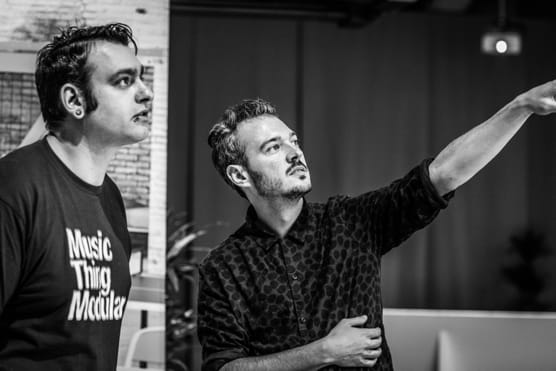
The Artwork
Vertigo in the Face of the Infinite
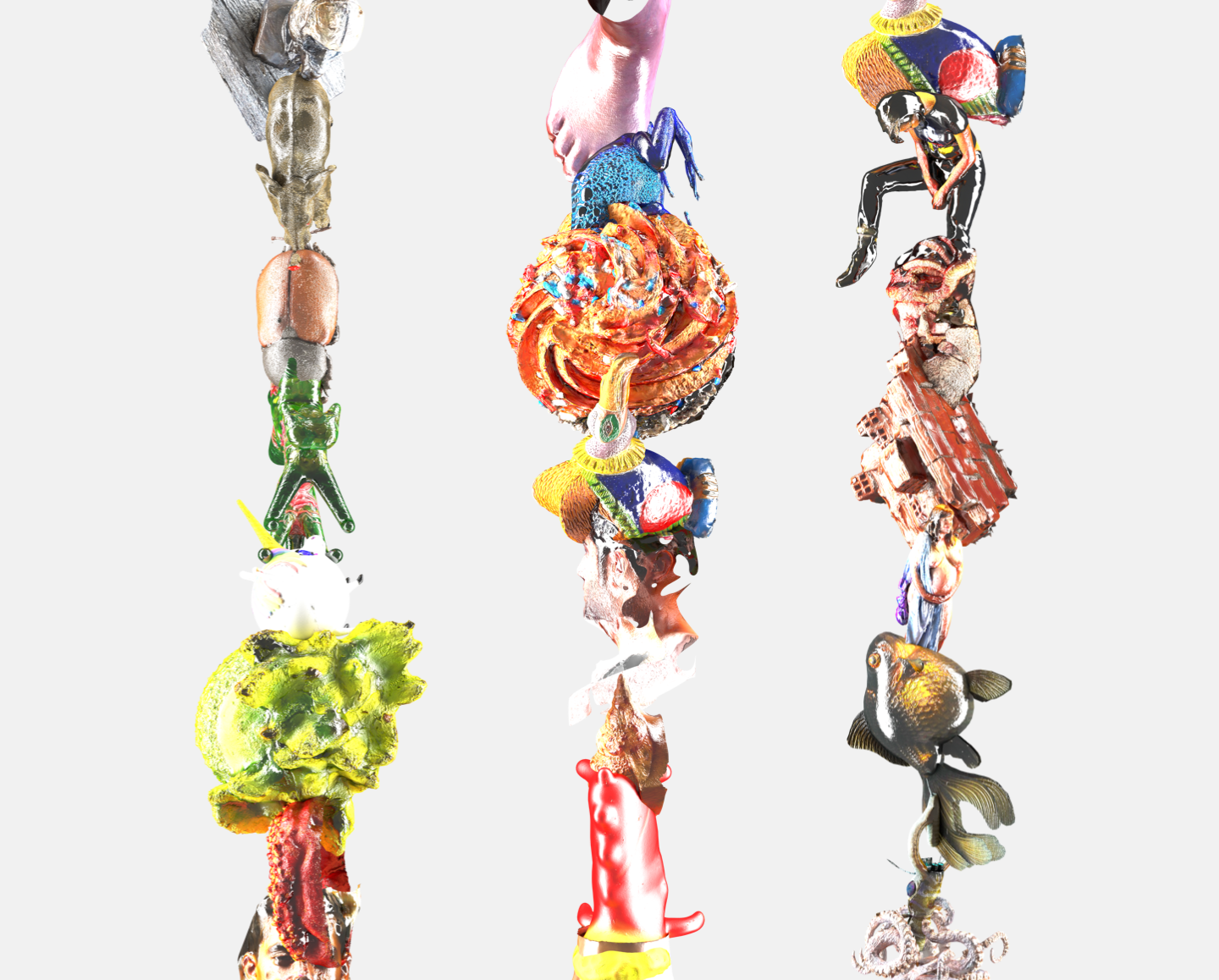
The design principle of the changing edition
The design framework is also meant to support this innovative approach. Similar to a magazine, a flexible design system possessing a high degree of recognition was created: With each new art project, the visual motifs and colour scheme of the media used on the website, in presentations or in printed communication materials, for example, will change.
Change as a constant
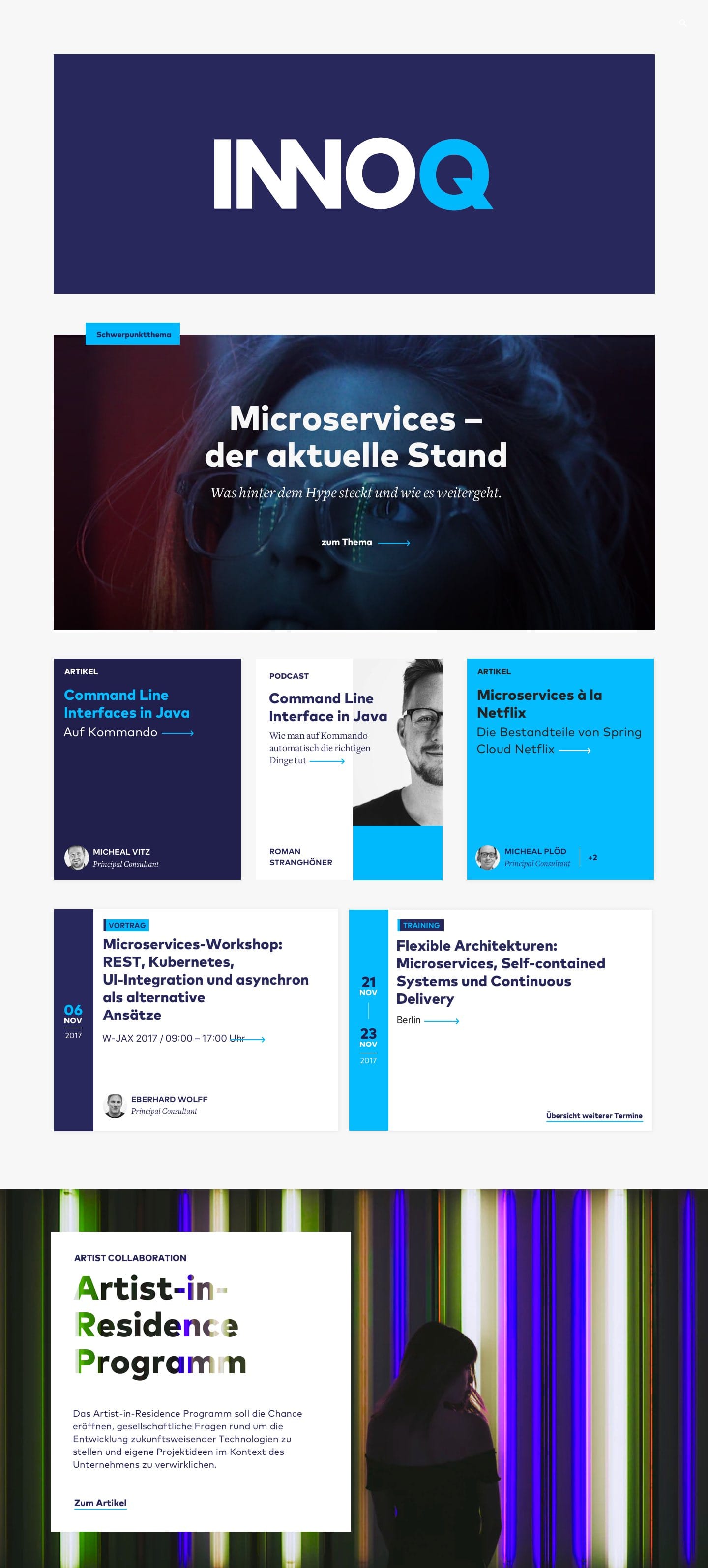
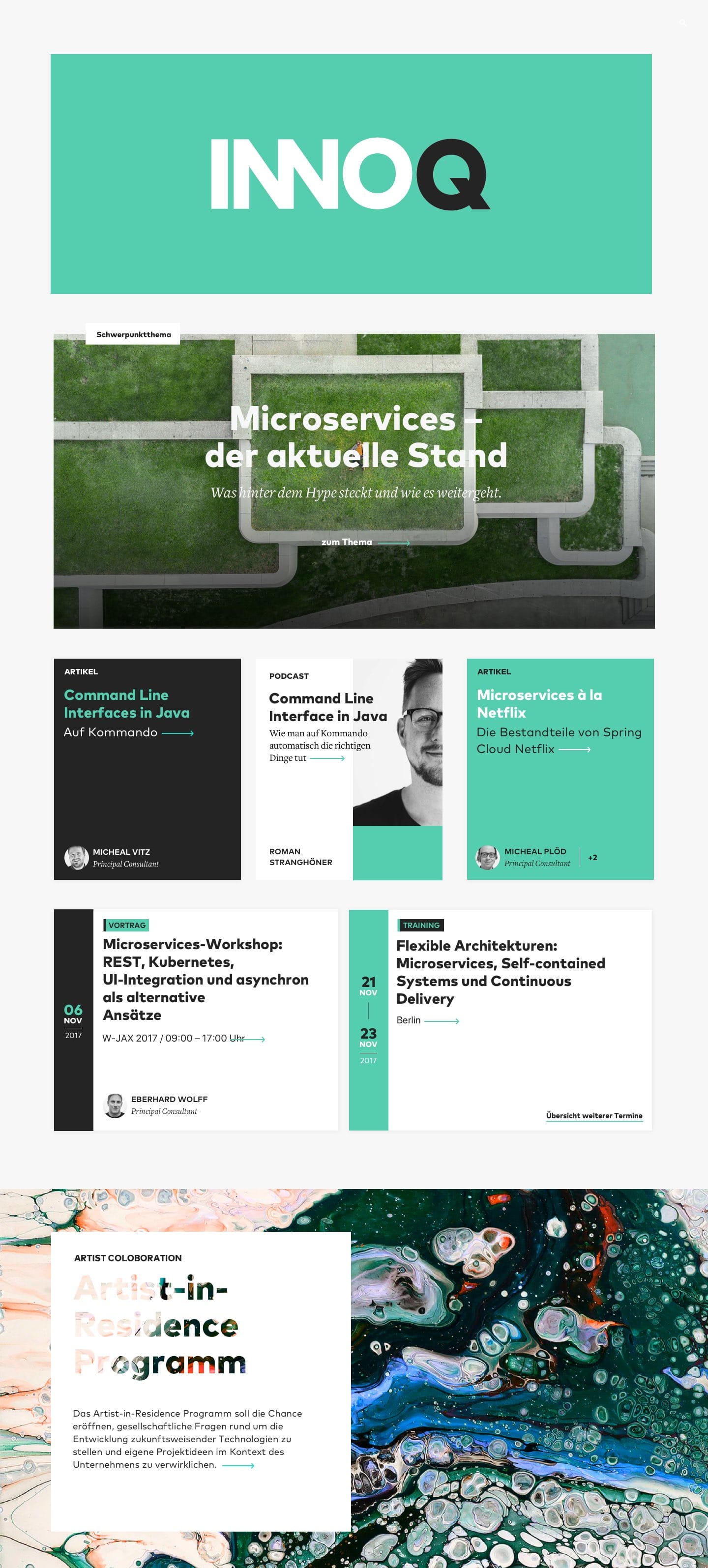
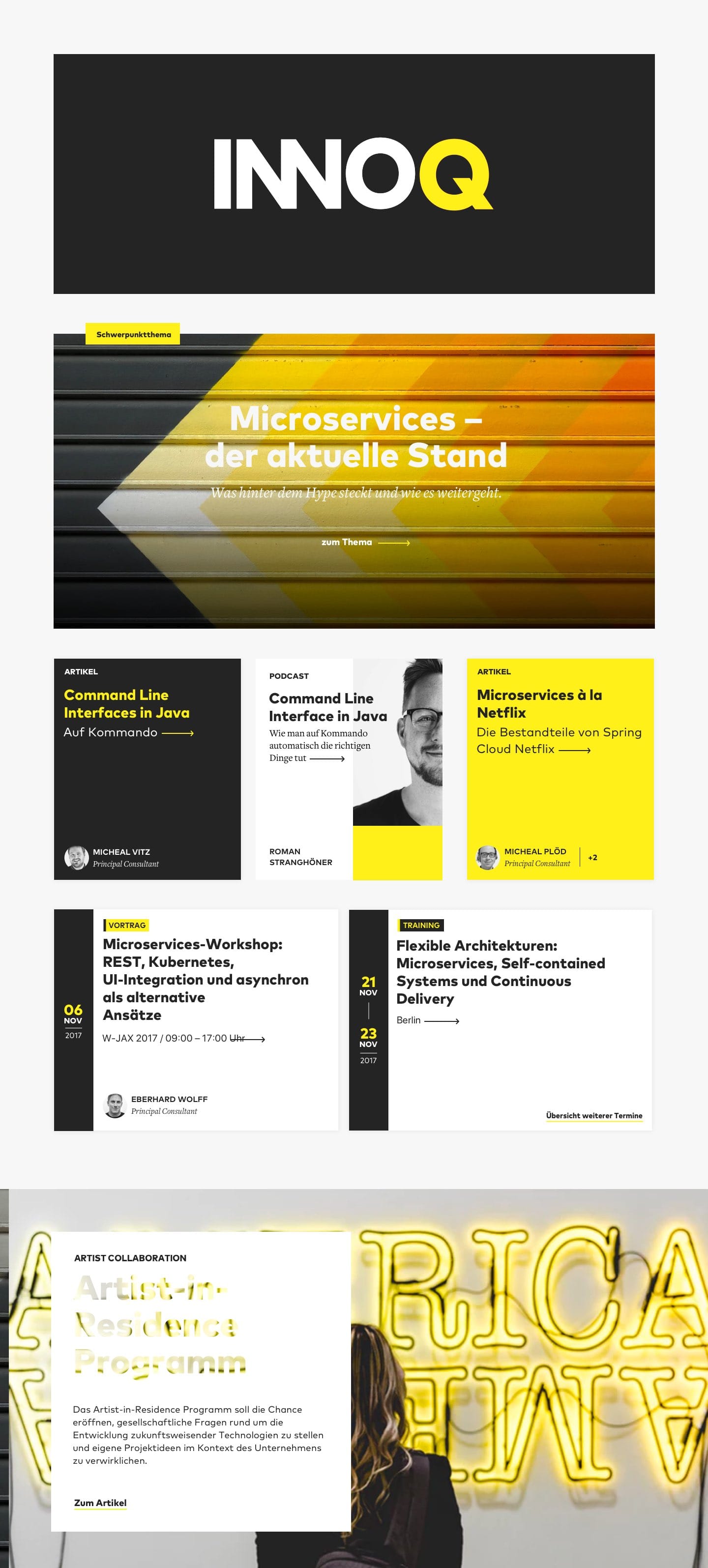
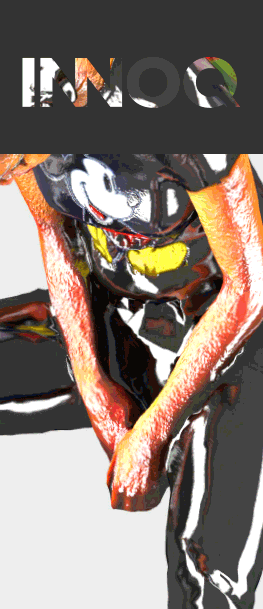
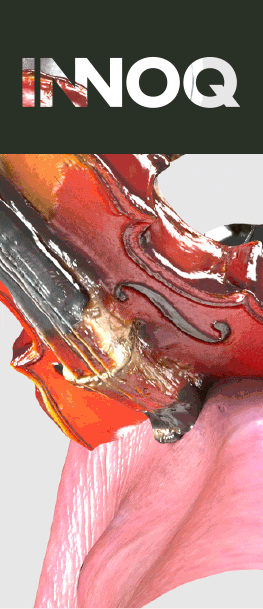
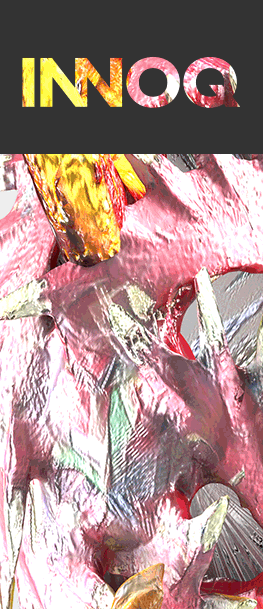
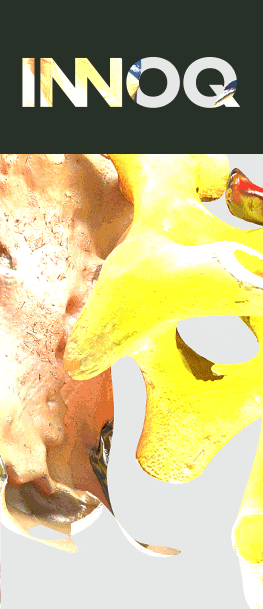
The typography is the design constant offering orientation and recognition. The dynamic brand image demonstrates INNOQ’s power of innovation and creates a constantly new and unmistakable impression that cannot be imitated by the competition.
